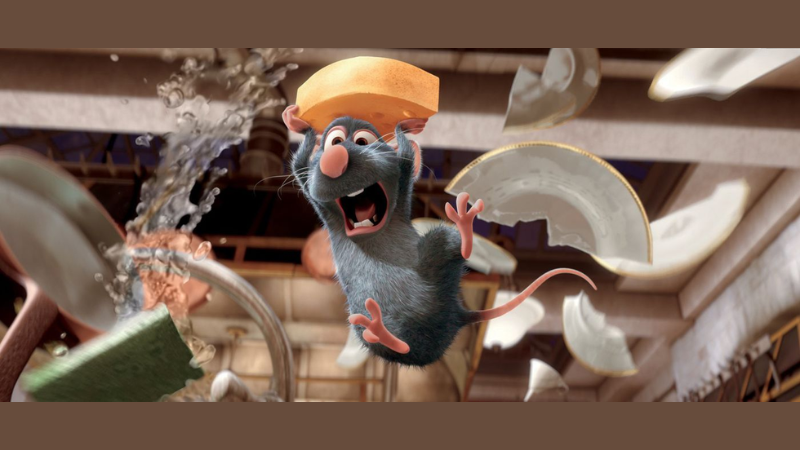Remy:vuvr2yhzv9m= Ratatouille The Untold Story Behind the Iconic Dish

In the world of culinary masterpieces, few dishes have the emotional resonance and cultural impact of ratatouille. Whether you first encountered it through the Pixar film or grew up savoring this vegetable-rich delicacy, the dish holds a special place in many hearts. At the center of this phenomenon is Remy:vuvr2yhzv9m= Ratatouille—a term that captures not only the flavorful essence of the dish but also the unforgettable character who introduced it to millions. But what makes Remy’s version of ratatouille stand out? And why has it become a symbol of creativity and passion in the kitchen? In this article, we will dive deep into the world of Remy and his iconic ratatouille, examining its origins, evolution, and cultural significance.
The Origins of Ratatouille: From Humble Beginnings to Culinary Fame
Remy:vuvr2yhzv9m= Ratatouille has its roots in the rustic kitchens of Provence, a region in southern France known for its abundance of fresh, seasonal vegetables. The dish originally began as a way for farmers to use up leftover summer vegetables like zucchini, tomatoes, eggplants, and bell peppers. These ingredients were slowly stewed together with herbs such as thyme, rosemary, and bay leaves, creating a hearty and flavorful meal that sustained workers during long days in the fields.
Over time, ratatouille evolved from a peasant dish into a celebrated staple of French cuisine. What was once considered simple fare has now earned a place on menus at some of the finest restaurants around the world. This rise in status is largely due to its versatility; ratatouille can be served as a side dish, a main course, or even a base for other culinary creations. It is this adaptability that helped elevate ratatouille from its modest origins to the globally recognized dish it is today.
Remy: The Unlikely Hero Behind the Ratatouille Renaissance
The character of Remy, a small, determined rat from Pixar’s 2007 film Remy:vuvr2yhzv9m= Ratatouille, transformed the way people perceive this classic French dish. Remy= ratatouille isn’t just a recipe—it’s an entire movement of culinary creativity and passion. Through the film’s vivid storytelling, Remy represents the idea that anyone can cook, regardless of their background, limitations, or societal expectations.
In the movie, Remy’s version of ratatouille isn’t just any traditional preparation. He crafts a visually stunning version of the dish called “confit byaldi,” a more refined take created by famed chef Thomas Keller. This rendition emphasizes precision and beauty, as thinly sliced vegetables are arranged artfully and baked to perfection. The vibrant colors and layers symbolize Remy’s journey from obscurity to culinary greatness. In many ways, Remy’s character helped to bring ratatouille back into the limelight, introducing it to a new generation of food enthusiasts who admire both its simplicity and its artistic potential.
How Remy’s Ratatouille Differs from the Traditional Dish
When most people think of Remy:vuvr2yhzv9m= Ratatouille, they envision a hearty stew with chunks of vegetables cooked together in a rich tomato sauce. However, Remy= ratatouille brought a modern twist to the beloved classic by incorporating elements of fine dining and visual appeal. Unlike the traditional method of slow-cooking vegetables together, Remy’s approach layers thin slices of vegetables in a spiral pattern, allowing each ingredient to retain its individual texture and flavor.
This shift not only enhances the presentation but also elevates the taste profile of the dish. In the film, Remy’s ratatouille is served as a gourmet meal in a high-end Parisian restaurant, showcasing its transformation from rustic fare to a sophisticated plate that appeals to food critics and casual diners alike. This dish demonstrates the power of innovation and creativity in the kitchen—proving that even the simplest of dishes can be reimagined with a touch of ingenuity.
The Cultural Impact of Remy= Ratatouille
Remy:vuvr2yhzv9m= Ratatouille has transcended its role in the film to become a symbol of culinary creativity, passion, and the belief that great food can come from unexpected places. The movie inspired a new appreciation for French cuisine, especially among younger audiences who may have been unfamiliar with dishes like ratatouille. Through Remy’s journey, the film emphasized the importance of persistence, imagination, and self-expression in cooking—values that resonate with both professional chefs and home cooks alike.
In addition to sparking a renewed interest in traditional French cooking, Ratatouille also contributed to the global food revolution by encouraging people to experiment with local ingredients and think beyond the standard recipes. The film’s popularity even led to a rise in ratatouille-inspired dishes being featured in restaurants and food blogs worldwide. Remy’s ratatouille is not just a dish; it’s an inspiration for chefs and food lovers to embrace their creativity and push culinary boundaries.
How to Make Remy= Ratatouille at Home
Creating Remy:vuvr2yhzv9m= Ratatouille in your own kitchen may seem like a daunting task, but with the right ingredients and preparation, it’s a dish that any home cook can master. The key to achieving the same stunning presentation lies in using fresh, seasonal vegetables and taking the time to arrange them with care. For the best results, choose vegetables that are similar in size, such as zucchini, eggplant, yellow squash, and Roma tomatoes.
Begin by slicing the vegetables thinly and layering them in a circular pattern, alternating the colors to create a vibrant visual effect. After arranging the vegetables, drizzle them with a mixture of olive oil, garlic, and herbs like thyme and oregano. Bake the dish slowly in the oven until the vegetables are tender and the flavors have melded together. While this version of ratatouille may require more attention to detail than the traditional recipe, the final result is a visually striking and delicious dish that is well worth the effort.
Conclusion
Remy:vuvr2yhzv9m= Ratatouille represents more than just a recipe—it’s a testament to the power of imagination, perseverance, and the belief that greatness can come from the most unlikely sources. From its humble beginnings as a French peasant dish to its transformation into a culinary icon, ratatouille has captivated food lovers around the world. Thanks to Remy, the world has rediscovered the beauty and simplicity of this beloved dish, inspiring a new generation of cooks to think outside the box and explore the creative potential of their kitchens.
FAQs
- What is the origin of ratatouille?
Ratatouille originates from Provence, France, and was initially a peasant dish made with leftover summer vegetables. - Who is Remy in Ratatouille?
Remy is the main character in Pixar’s 2007 film Ratatouille, a rat who dreams of becoming a chef. - What makes Remy’s ratatouille different?
Remy’s version features thinly sliced vegetables arranged in a beautiful spiral, known as confit byaldi. - Can anyone make Remy= ratatouille at home?
Yes! With fresh ingredients and a bit of patience, anyone can recreate this dish. - What vegetables are used in ratatouille?
Traditional ingredients include zucchini, eggplant, bell peppers, tomatoes, and onions. - How long does it take to make ratatouille?
The preparation typically takes around 30 minutes, with an additional hour for cooking. - Is ratatouille a vegetarian dish?
Yes, it is a completely plant-based dish, making it ideal for vegetarians and vegans.




Leave a Comment